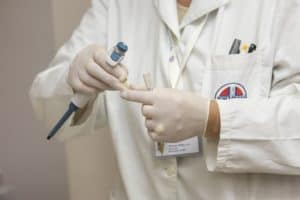The California Medical Assn., the powerful lobbying arm for the state’s doctors, has so far blocked those efforts. But this year could be different, with a key lawmaker, Assemblyman Jim Wood (D-Healdsburg), switching sides.
Wood, who voted against a 2015 bill to grant autonomy to nurse practitioners, is authoring this year’s version of the legislation. Wood said he became convinced a change was needed because of the growing gap between primary care providers and patients, particularly in rural and inner-city areas. He hopes other reluctant lawmakers will flip, too.
“A lot of people are lacking care,” said Wood, who is a dentist. “As we expand more and more to offering care to everyone, to not have providers is an empty promise and we can’t do that in California.”
Assembly Bill 890 will face its first hearing in the state Legislature on Tuesday, where the California Medical Assn. will again be in opposition.
The medical association argues that nurse practitioners should not have autonomy because they lack the extensive education or clinical training needed to practice without the oversight of a doctor.
The California Future Health Workforce Commission, a group that includes Wood and is co-chaired by UC President Janet Napolitano, released a report in February urging lawmakers to grant nurse practitioners across the state more autonomy as part of a $3-billion plan to ensure the state can meet the medical needs of residents.
The report also proposed that the state invest in expanding doctor training programs and create incentives like loan forgiveness and scholarships for students who pledge to work in rural areas of the state where shortages are most severe.
Wood said working on the commission’s report, which highlighted the state’s looming healthcare crisis, prompted him to reevaluate his opposition to expanding the role of nurse practitioners in the state. The state does not currently have enough doctors and nurse practitioners and more than one-third of those who are practicing are approaching retirement age.
California is expected to face a massive workforce shortage in the next decade, with the state needing 4,100 more doctors and 600,000 additional home care workers, the commission said in its report.
At the same time, Gov. Gavin Newsom wants to widely expand healthcare access for lower-income and immigrant communities. Newsom proposed extending Medi-Cal coverage to young adults who are in the U.S. illegally and providing more subsidies for middle-class families struggling to afford health insurance, with Democratic lawmakers taking up both of those issues in the Legislature.
Janus Norman, senior vice president of governmental relations for the California Medical Assn., said the group supports the commission’s plans for expanding doctor and other healthcare worker training programs. But, lowering the bar on who can provide care is not the answer, Norman said.
“The way to increase access is with the investments the state is already starting to make,” Norman said. “The fight around this issue is always the same.”
Two previous bills by former state Sen. Ed Hernandez (D-West Covina) in 2013 and 2015 passed the Senate, only to fail in the Assembly. This year, the bills will start in the Assembly. AB 890 is expected to face its first hearing Tuesday in Asm the Assembly Business and Professions Committee, where Hernandez’s last attempt failed in 2015. Six lawmakers from that vote remain on the 20-member committee, only two of whom supported the previous effort.
Surani Kwan, a nurse practitioner at Russian River Clinic in Sonoma County, said this year’s effort comes as more people are seeing the effects of the doctor shortage and have experience being treated by nurse practitioners.
California is one of 28 states that require nurse practitioners to work under a doctor’s oversight, although the state does not require the physician to be in the same clinic or city, just available by phone.
Kwan said under AB 890, current patients would continue to have the same quality of care, but the bill would ease burdens for those setting up new practices in places like the Central Valley where it can be difficult or expensive to contract with a doctor.
“Physicians don’t sit at your side and supervise what you do,” Kwan said. “This will change the face of healthcare. It doesn’t change what we do, we will do what we are trained to do in school. It will enable nurse practitioners to run clinics without having to have a physician sign off.”
By Melody Gutierrez, Doctors have blocked nurse practitioners from expanding care. Could that change?, on LATimes.com

